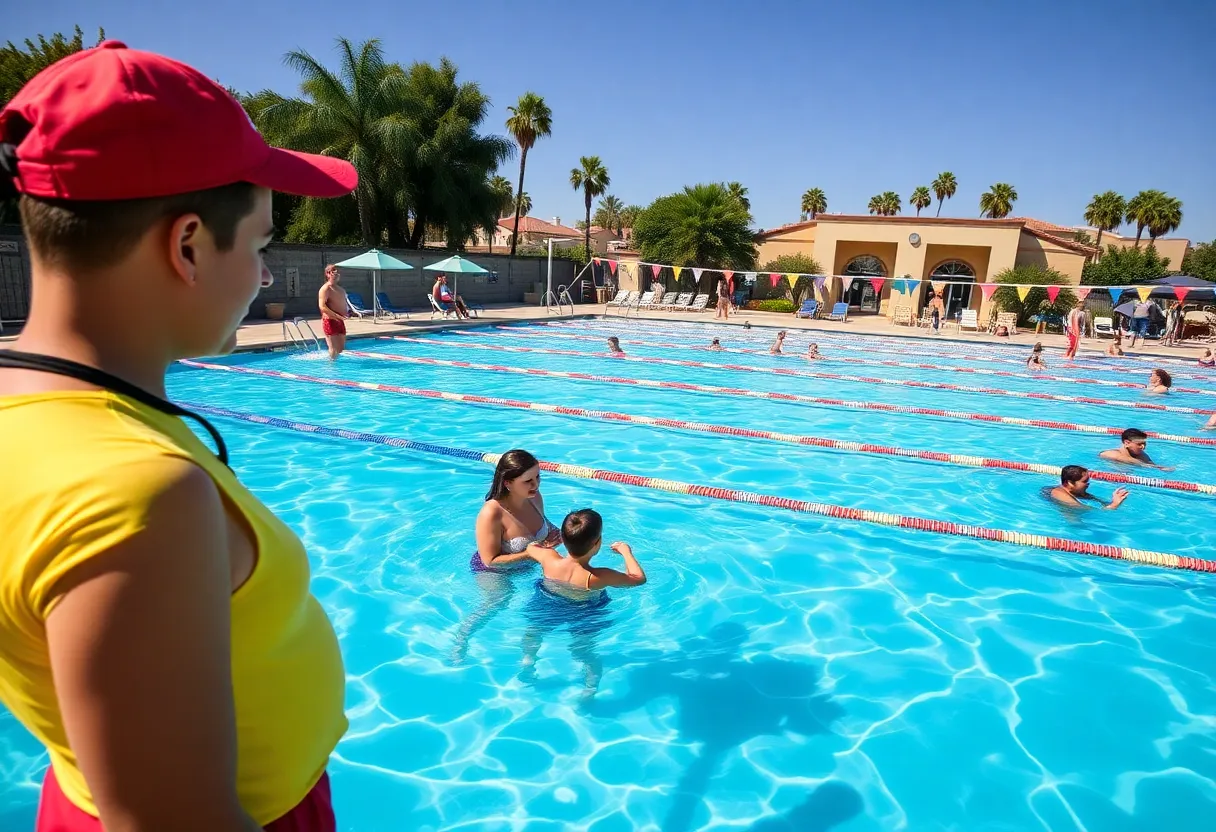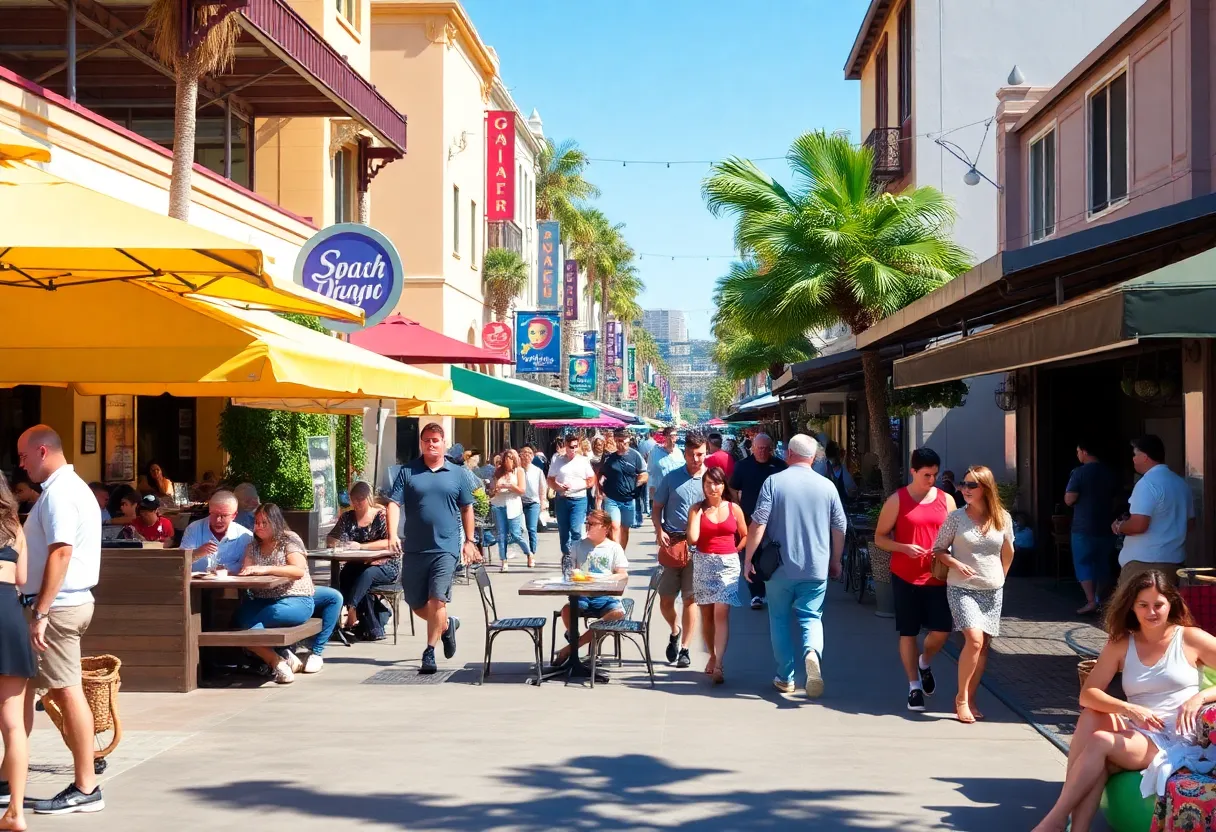News Summary
San Diego has become a model for maintaining public pool operations despite a widespread lifeguard shortage affecting the U.S. By increasing starting pay for lifeguards by 30% and focusing on recruitment, the city has ensured all 15 public pools remain open. This contrasts sharply with national trends where many pools have closed due to staffing issues. The city is actively engaging applicants of all ages, while also addressing swimming skill gaps in underserved communities, striving to ensure safety and accessibility in public swimming facilities.
San Diego has successfully maintained all of its public swimming pools open, despite a widespread lifeguard shortage affecting many parts of the United States. The city has implemented a strategic approach to combat the staffing crisis by increasing starting pay for lifeguards by 30%, enticing more individuals to consider lifeguarding as a viable career option rather than merely a summer job for teenagers.
Currently, all 15 public pools in San Diego are operational, excluding two that are under construction. This success stands in stark contrast to the national trend where approximately one-third of the 309,000 public swimming pools reported closures or inconsistent operations last year due to a lack of qualified staff. San Diego has managed to hire over 100 pool guards each year for the last two years, ensuring a consistent presence of lifeguards at its facilities.
In San Diego, lifeguards can earn salaries significantly above the state’s minimum wage of $17.25, with some able to make up to 30% more. The city is actively seeking to engage individuals of all ages in lifeguarding roles, addressing the shortage and promoting accessibility to the profession. The application process for becoming a lifeguard is open year-round, targeting applicants who are at least 16 years old and possess basic swimming skills.
Amidst these efforts, there are underlying concerns regarding the swimming skills gap prevalent in local communities, particularly among children in underserved areas such as Barrio Logan. Data from the Centers for Disease Control and Prevention (CDC) indicates that 79% of children from households with annual incomes below $50,000 lack essential swimming skills, consequently increasing their risk of drowning. As drowning rates among children have risen significantly, there is growing public awareness about the need for trained lifeguards to ensure safety in swimming facilities.
According to experts, pool access and formal swim education are vital, especially in neighborhoods where drowning risks are elevated. While San Diego has successfully kept its pools open, numerous facilities across the country, including places like the Carlsbad Alga Norte Aquatic Center, are modifying operations or undergoing renovations due to lifeguard shortages. The American Lifeguard Association has emphasized that the danger associated with unguarded swimming areas significantly increases the necessity for trained lifeguards.
In a broader context, the national lifeguard workforce saw a steep decline from over 144,000 employees in 2019 to just over 123,500 in 2023. The reasons for these staffing challenges are multifaceted, including public perception of lifeguarding jobs being less appealing when compared to other summer employment opportunities. Additionally, potential lifeguards often face substantial training time and costs, which can deter young individuals from entering the field.
In response to these challenges, cities across the United States, including Austin and Phoenix, are adopting similar strategies to recruit lifeguards by increasing salaries and providing bonuses. Innovative recruitment campaigns are being launched to reshape the public image of lifeguarding as a critical and impactful profession. Boulder has even initiated a campaign portraying lifeguards as “superheroes” to attract potential applicants and underline the importance of their roles in ensuring public safety.
In light of these developments, the city of San Diego aims to continue its efforts to keep public pools operational while addressing the national lifeguard shortage. By raising pay, promoting lifeguarding as a professional path, and actively seeking applicants of all ages, San Diego is working to mitigate the risks associated with unguarded swimming areas and to enhance community safety.
Deeper Dive: News & Info About This Topic
HERE Resources
Explore San Diego’s Thriving Happy Hour Scene
Top Summer Hiking Trails in San Diego
San Diego Faces Public Health Concerns Over Restroom Cuts
Additional Resources
- CBS 8: San Diego Keeps Public Pools Open
- CBS 8 Video: Lifeguard Shortage
- USA Today: Lifeguard Shortage and Drowning Increase
- Google Search: American Lifeguard Association
- Wikipedia: Lifeguard







